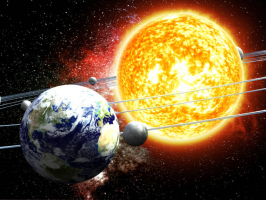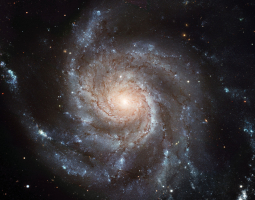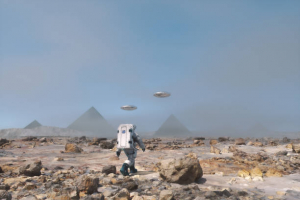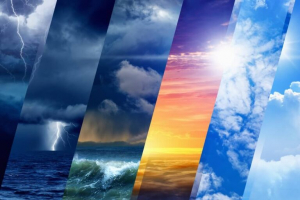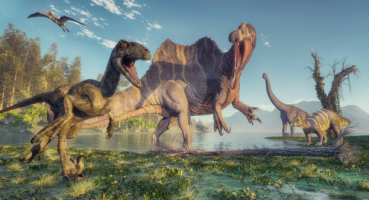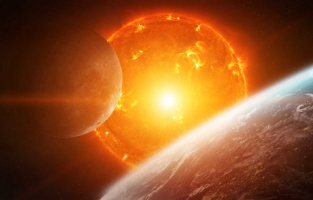Top 10 Questions About the Moon Answered
The Moon originated roughly 4.6 billion years ago, at the same period as the Earth. The Moon is largely made of rock, with a tiny iron-rich core. Its highly ... read more...cratered surface was produced by asteroids bombarding the solar system while it was young, perhaps 500-700 million years after its creation. The Moon not only lacks water, but it also lacks a permanent atmosphere. What are some of its characteristics, and how does it affect us on Earth? Let's discover common questions about the Moon answered.
-
The Moon is the sole natural satellite of Earth. With a diameter around one-quarter that of Earth, it is the fifth biggest satellite in the Solar System and the largest and most massive compared to its home planet (comparable to the width of Australia). The Moon is a planetary-mass object with a distinct rocky body, making it a satellite planet by geophysical criteria and bigger than any known Solar System dwarf planets. There is no atmosphere, hydrosphere, or magnetic field. It has a surface gravity around one-sixth that of Earth, at 0.1654 g, with Jupiter's moon Io being the only satellite known to have a greater surface gravity and density.
The most commonly accepted origin theory holds that the Moon originated 4.51 billion years ago, not long after Earth, from the debris of a massive impact between the planet and a Mars-like body called Theia. Because of tidal contact with the Earth, it then receded to a broader orbit. Dark volcanic maria ("seas") cover the areas between brilliant old crustal highlands and notable impact craters on the Moon's near side. By the conclusion of the Imbrian epoch, around three billion years ago, most of the big impact basins and mare surfaces were in place. The lunar surface is relatively non-reflective, with lunar dirt having a reflectance equivalent to asphalt. The full moon, on the other hand, is the brightest celestial object in the night sky due to its huge angular diameter. The Moon's apparent size is roughly equal to that of the Sun, allowing it to totally cover the Sun during a total solar eclipse.
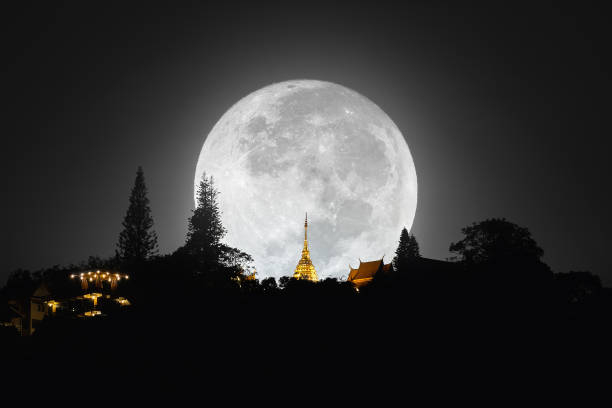
istockphoto MinuteEarth Channel -
There is no true Man in the Moon, but the idiom is derived from dark regions on the Moon's surfaces (the lunar maria, or "seas") that some people believe resemble two eyes and a smile. This said face is most seen in the early evening, when the Moon is about full. In the full Moon, certain cultures perceive distinct shapes, such as the silhouette of a lady, a moose, a buffalo, a hare, a frog, or a dragon.
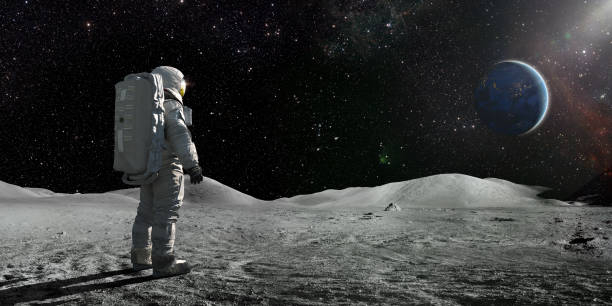
istockphoto 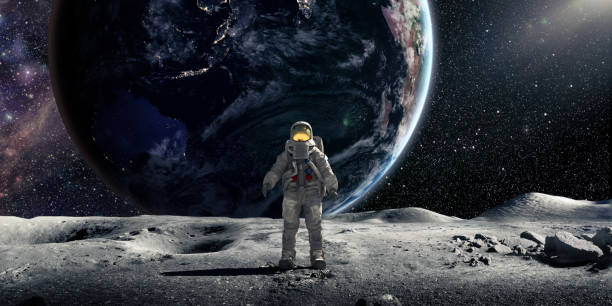
istockphoto -
Moonquakes are earthquakes that occur on the Moon. Although moonquakes are far less numerous and weaker than earthquakes, certain forms can register up to 5.5 on the Richter scale, which would cause structural damage if they happened on Earth. The vibration from shallow moonquakes frequently lasts longer than 10 minutes. Earthquakes, on the other hand, last only one or two minutes.
SciShow Space Channel OnMatters Channel -
Because your body weighs less on the Moon, you can jump higher than on Earth. The gravity on the Moon is one-sixth that of Earth, yet you definitely couldn't leap six times as high because you'd be wearing a huge, cumbersome spacesuit! The moon is little larger than a quarter of the size of the Earth.
However, if it had the same mass as Earth, the moon's gravity would be 14 times greater, and you would be unable to leap at all. If the same mass was reduced to the size of a hamlet, it would collapse into a black hole. The Moon's gravity is lower than that of the Earth; in fact, it is one-sixth that of the Earth. When you're on the Moon, your weight is one-sixth that of Earth. But because your muscles are as powerful as they are on Earth, you can jump six times farther!
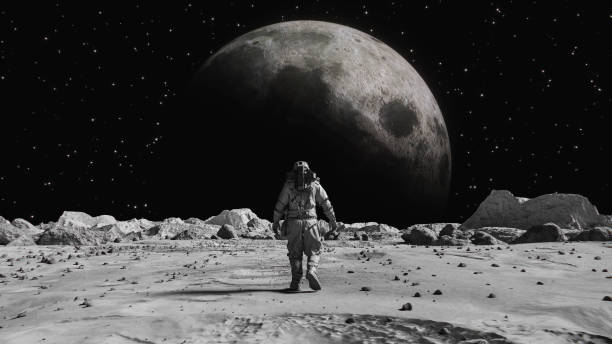
istockphoto Jinzo X Channel -
During their embryonic years, planets are very hot, and our Moon is no exception. The entire Moon would have been a molten chaos of fire and lava at its birth. The Moon's crust, or outer layer, would have been the first to begin cooling in the frigid vacuum of space. Around 4 billion years ago, the Moon would have consolidated sufficiently to begin showing volcanic activity. There was enough gas for the Moon to generate an atmosphere since eruptions were so common. It retained that atmosphere for approximately 70 million years, until the Moon cooled considerably further.
Molten lava would have routinely penetrated the Moon's crust and poured out onto the lunar surface during the peak of its volcanic activity. Given the ability to track back billions of years in lunar surface material, volcanic activity must have ceased significantly approximately 3 billion years ago. While the Moon's volcanic activity remained moderately active for the following two billion years, it eventually ceased. For many years, geologists believed that volcano activity had halted over a billion years ago, but new evidence suggests otherwise. The Apollo 15 mission was the first to find uneven areas of cooled lava, which are currently considered to be as young as 50 million years old. These "young" volcanoes are too tiny to be visible from Earth, yet they add to the Moon's volcanic history. Some scientists believe that volcanic activity on the surface of our cosmic neighbor is far from over.
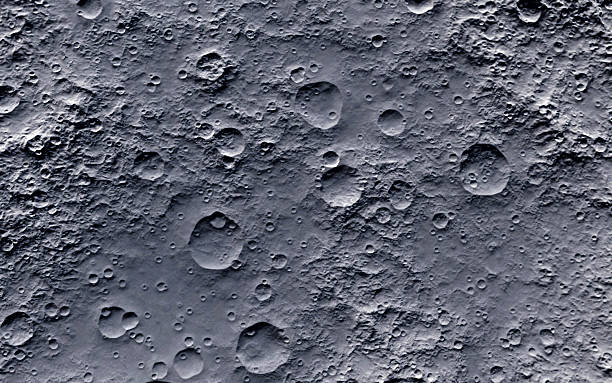
istockphoto Insider Tech's Youtube -
The ocean tides are caused by gravity. Gravity is the attraction force that all matter has on other matter, and it is what keeps us attached to the Earth. The substance that makes up the Earth attracts each other, causing it to pull itself into this spherical ball known as the globe. If there were no other external causes, the Earth would be a smooth, round sphere with the same depth all everywhere and never changing. However, our moon has its own gravitational force that influences various aspects of our lives on Earth.
The tides are caused by the moon's gravitational pull acting on the water, bulging it both toward and away from the moon. At the area closest to the moon and on the opposite side of the Earth, the tide is higher and the ocean is higher. The bulge shifts when the Earth spins and changes its location relative to the moon. As the bulge passes through a certain region, the sea level rises and falls. The tide changes from high to low and back again every six hours. Typically, two high tides and two low tides occur in a 24-hour period. The centrifugal force induced by the rotation of the Earth generates another mound of water and high tide on the opposite side of the globe. Between these two high tides are two flat patches on the ocean's surface known as low tides.
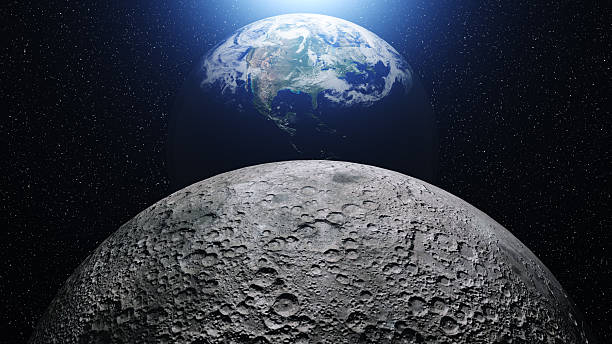
istockphoto ABC Science Channel -
The reason behind this is that the moon is so far away in comparison to the terrestrial objects around you. You pass past buildings, people, and farm fields, but you never outrun the moon. It looks to be following you on your travels. Assume you're traveling along a straight road with the moon ahead of you. The moon does not pass through the front windows, to the side, and then to the rear, like a house or tree would. Similarly, if the moon is behind you, it appears to remain still as items in your terrestrial scene pass by.
Also, while driving, our brains quickly compare the distant moon and stars to the busy foreground racing by. Meanwhile, since the moon and stars are so far away, they appear to remain stationary. And it may appear that these objects in space are moving in lockstep with you.
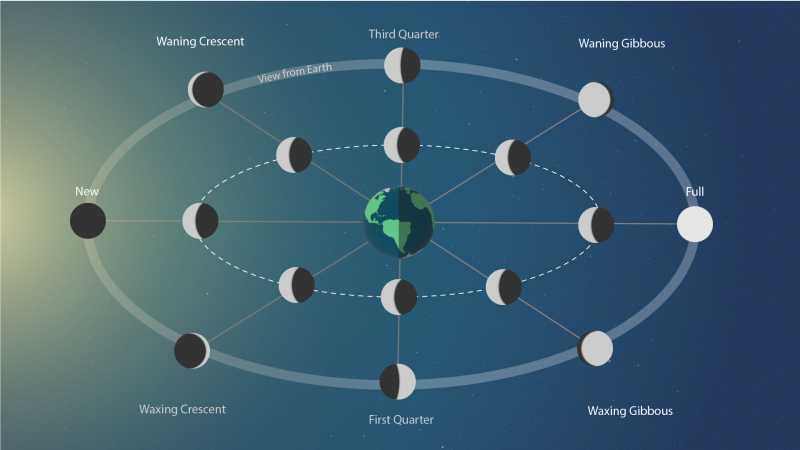
istockphoto ABC Science Channel -
The primary distinction between the two is that Earth possesses mechanisms that may erase practically all trace of previous impacts. The Moon, however, does not. Almost every minor dent caused on the Moon's surface will remain there. Three mechanisms assist Earth in keeping its surface crater-free. The first is referred to as erosion. Weather, water, and vegetation all exist on Earth. These work together to splinter and wear down the earth. Erosion can eventually reduce a crater to almost nothing.
In terms of geology and weather, Earth is more dynamic than the Moon, making it difficult for craters to persist. Even the surface craters that scientists can see, which might be millions of years old, have been covered by flora, worn by wind and rain, and altered by earthquakes and landslides. Meanwhile, the Moon is geologically calm and has essentially little weather, making its hundreds of millions of craters visible. Meteorites and volcanic activity both contributed to the formation of the craters. Some of the oldest Earth rocks may be waiting to be discovered on the Moon, having been blasted there billions of years ago by asteroid collisions that rocked both worlds.
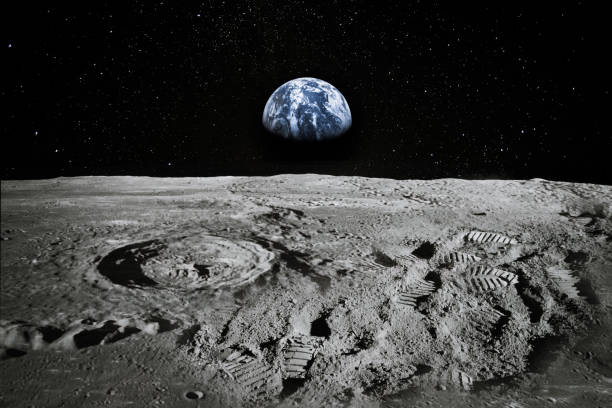
istockphoto 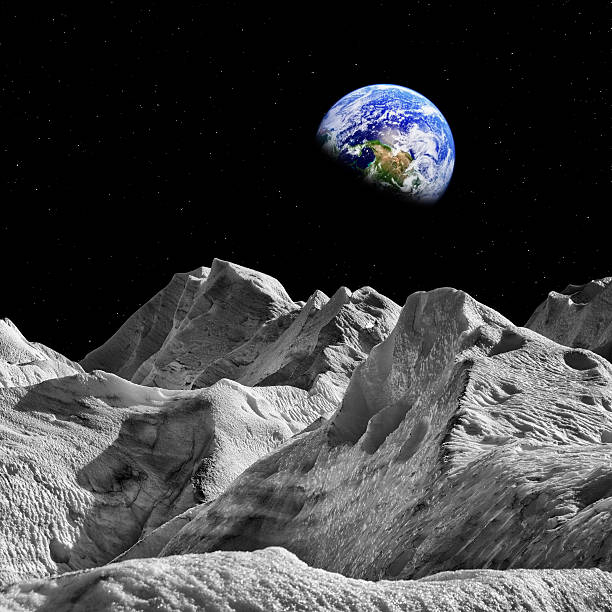
istockphoto -
The moon is the brightest object seen in our night sky. However, how huge is the moon? The average radius of the moon is 1,079.6 miles (1,737.5 kilometers), while the average diameter is 2,159.2 miles (3,475 km). According to NASA, the moon is less than a third the breadth of our home planet. The equatorial circumference of the moon is 6,783.5 miles (10,917 km). The moon appears to be rather enormous at first glance, but this is only because it is our closest celestial body – around 238,855 miles (384,400 km) distant on average.
The moon is somewhat bigger than one-quarter (27%) the size of Earth, a far greater ratio (1:4) than any other planets and moons. The moon of Earth is the fifth biggest in the solar system.
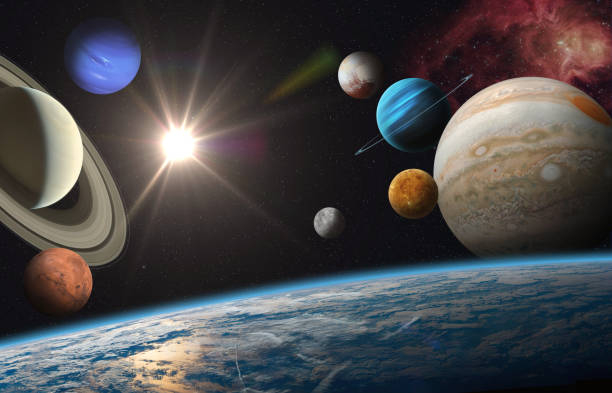
istockphoto Kurzgesagt – In a Nutshell Channel -
The distance between the moon and Earth influences the intensity of ocean tides and the appearance of solar eclipses in our skies. According to NASA, the average distance between the blue planet and its sole natural satellite is around 238,855 miles (384,400 kilometers). Because the moon does not orbit Earth in a perfect circle, there are times when it is closer or further away from our planet than this average distance. The moon's closest approach to Earth, known as perigee, is around 226,000 miles (363,300 km). A supermoon occurs when perigee coincides with the full moon phase. The word is not scientific in nature, but it is used by skywatchers when the full moon arrives within 90% of perigee.
Supermoons are around 17% larger and 30% brighter than the year's darkest moon. Because the moon's gravity pulls on Earth's seas to cause tides, the moon's increased closeness to Earth near perigee can also cause higher-than-normal tides. The moon's apogee, or farthest distance from Earth, is around 251,000 miles (405,500 km) from our planet. Annular, or "ring of fire," solar eclipses are one of the best natural displays of apogee.
The occurrence of solar eclipses is notable for its serendipity. The moon's closeness to Earth will be 400 times higher than the sun's distance to Earth over the next 600 million years. Because the diameter of the star is nearly 400 times that of the moon, the disks of both objects tend to match almost exactly during solar eclipses. This results in totality, when only the solar corona may be seen peeking out from behind the moon.
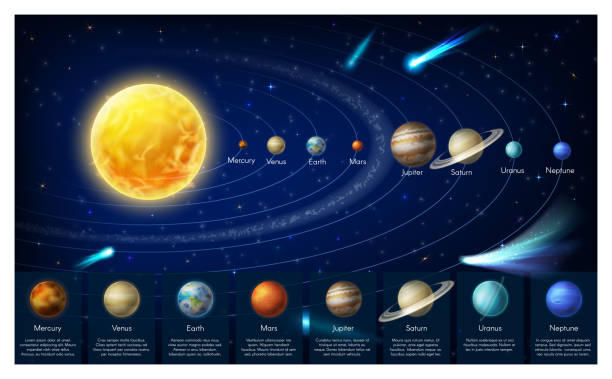
istockphoto The Science Asylum Channel












